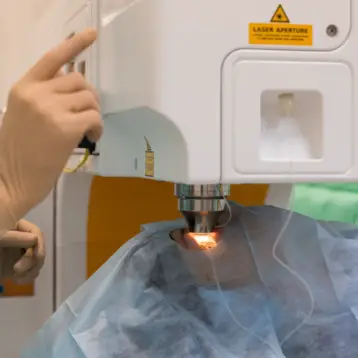|
High intensity focused ultrasound has already been approved to treat uterine fibroids and clinical trials for its use to destroy breast cancers and other tumors are underway. Treating the brain, however, requires a slightly different approach. The human skull acts as a shield, absorbing energy and distorting the path of waves including the sound waves found in ultrasound beams. Insightec solved this difficulty by designing a collection of over one thousand independently focusable transducers and placing them inside a helmet worn over the patient’s head. The resulting level of control allows the operator to precisely compensate for the shielding effect, allowing the resulting beams to reach the desired location. A cooling system is also used to ensure the skull doesn’t overheat during the procedure.
Real-time magnetic resonance imaging scans, better known as MRIs, are used to locate the desired focal point of the beams (which differs from patient to patient depending on their specific problem and their individual brain morphology) and to monitor their effectiveness. The beam heats the target area to 130 degrees Fahrenheit, hot enough to kill the cells within the affected 10 cubic millimeter volume.
So far the new procedure has been tried on nine patients suffering from extreme chronic pain that hasn’t responded to medication or other less severe intervention. The traditional treatment for these patients is to remove a portion of the thalamus using either an invasive procedure involving electrodes placed through holes drilled in the skull or radiation applied over many weeks or months. The ultrasound is both less invasive and immediately effective in a single session. All nine patients in the first test group reported considerable relief as soon as the procedure was completed. A few seconds of tingling or dizziness while the beams were active were the only common side effects; one of the nine patients also experienced a brief headache. No neurological problems or permanent side effects of any kind occurred in any of the patients.
The one potential drawback of the ultrasound procedure is that it doesn’t include any mechanism for testing that the proper section of brain tissue has been identified. Neurosurgeons performing the invasive electrode procedure have the opportunity to zap the targeted tissue and observe the response to double check they’ve properly identified the location to remove. That isn’t possible with ultrasound.
An expansion of the current testing with additional patients suffering from chronic pain is planned for later in 2009, as are additional tests designed to treat the symptoms of Parkinson’s Disease and other functional neurological diseases.
TFOT has previously reported on other innovative surgical procedures including a new partial knee replacement system incorporating robotics and three dimensional imaging, tiny robot pills that perform targeted surgeries once swallowed by the patient, and a new laser microscalpel that can target individual cancer cells.
Read more about focused ultrasound and the use of magnetic resonance imaging to guide ultrasound beams at this Insightec informational page or at the Focused Ultrasound Surgery Foundation website. Limited information about the brain surgery procedure is also available at this Insightec product page. The abstract of a paper describing the initial test results in Annals of Neuroscience is also available from Wiley Interscience.










